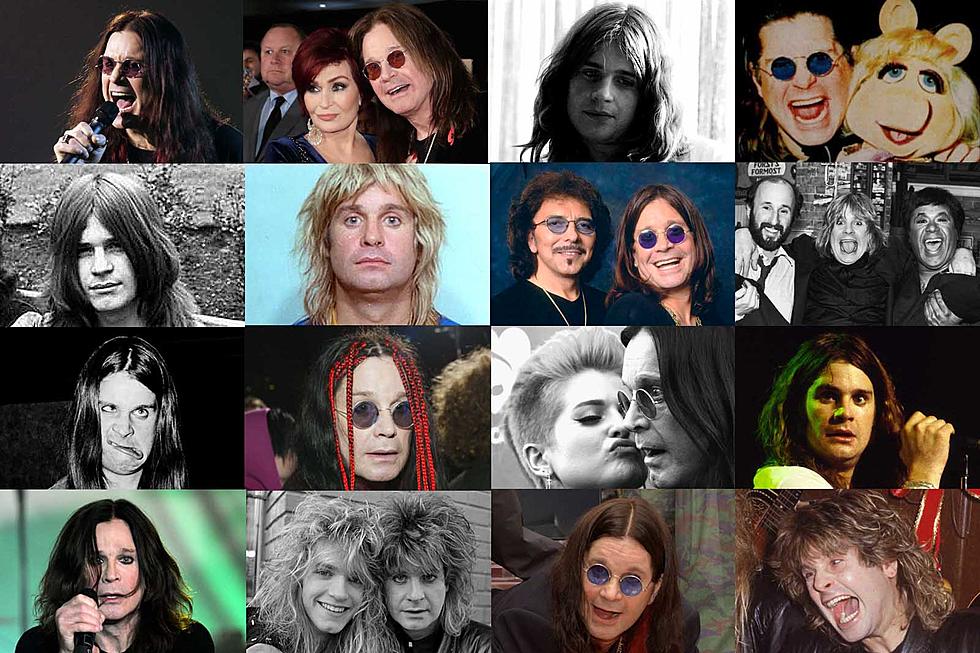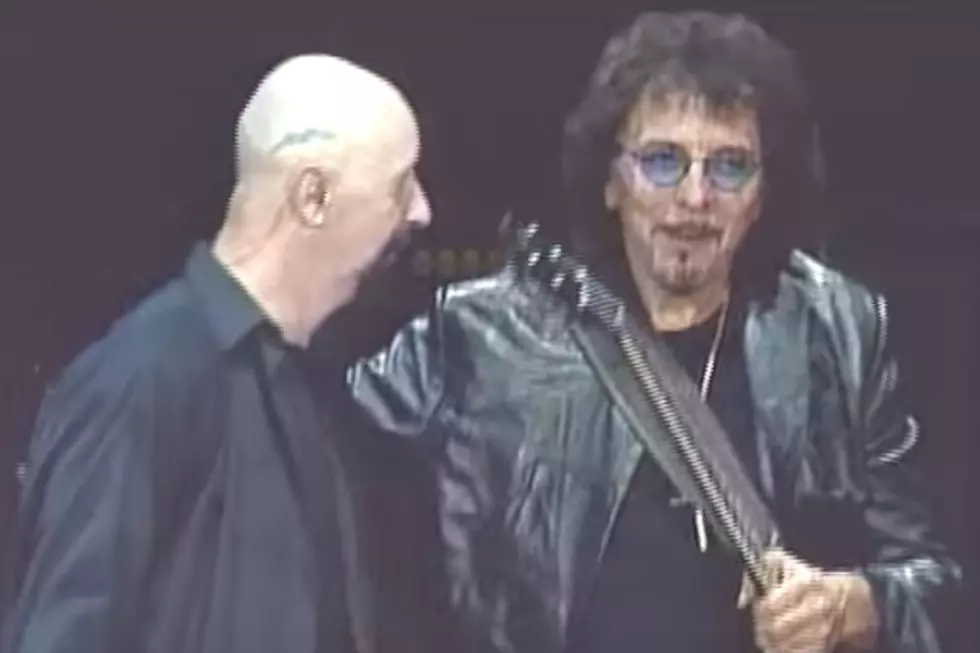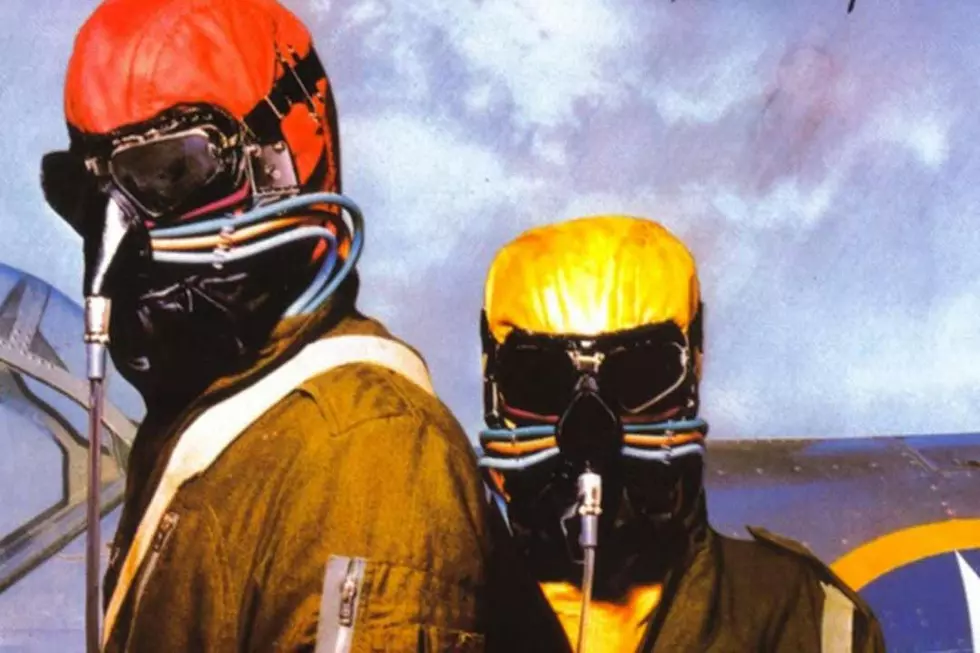
How Black Sabbath Survived the ’80s
Influential bands like Led Zeppelin and the Beatles never made the missteps their contemporaries did by soldiering on with constantly changing lineups. The same can't be said for Black Sabbath, the metal powerhouse accurately credited with laying the foundation for metal, sludge, doom and a host of other genres in the '70s.
The following decade started off promising enough, as Sabbath released Heaven and Hell with a new frontman in ex-Rainbow singer Ronnie James Dio, almost one year to the date after the firing of Ozzy Osbourne.
“We went with Ronnie because we liked the way he worked and we liked his voice,” guitarist Tony Iommi said in his 2011 book Iron Man: My Journey Through Heaven and Hell with Black Sabbath. “The music took a different turn after he joined us. It was new blood in the band. … It gave me other places to go music-wise.”
Featuring the singles “Neon Knights” and “Die Young,” along with fan favorites like the title track and “Children of the Sea,” Heaven and Hell became the group's best-selling album so far. Its success served as justification that Iommi, by then Black Sabbath's de facto leader, had made the right choice in vocalists – even if fans took a bit to come around.
“We were doing big shows and it was difficult for Ronnie to go out and stand in front of people who had seen Ozzy in that spot for 10 years,” he said. “Some of the kids hated it and they’d shout: "'Ozzy, Ozzy!' But eventually Ronnie won them over.”
Listen to Black Sabbath Perform 'Neon Nights' With Dio
Propelled by the triumph of Heaven and Hell, Sabbath went into the studio to record the follow-up Mob Rules along with new drummer Vinny Appice, who had replaced Bill Ward. Though the sessions were a bit of a power struggle, with Dio taking on a larger role in the process, the final product was a hit with fans.
Tensions began to build throughout the ensuing tour, however, partly due to Warner Bros. having offered Dio a solo album deal and rumblings that he was going to take it. Everything came to a head during the mixing of 1982’s concert album Live Evil, with the engineer accusing Dio of coming in and changing the mixing levels to his liking.
“It was all completely untrue and absolutely stupid!” the singer said in an interview years later. The resulting row led Dio and Appice to quit and form the band Dio. Iommi and bassist Geezer Butler were left without a singer again.
Michael Bolton tried out but, as Iommi said, “he wasn’t exactly what we were looking for then.” David Coverdale was another choice, but had just signed with Geffen to do a Whitesnake album. Ironically, the frontman Coverdale replaced in Deep Purple in the ‘70s, Ian Gillan, was then settled upon. Iommi wanted to call the band something else, but manager Don Arden convinced them to keep it going as Black Sabbath.
Listen to Black Sabbath Perform 'Zero the Hero' With Gillan
Born Again, with Ward back behind the kit, was released in the summer of 1983, but Gillian’s style wasn’t a good fit for the band and the album received poor reviews. The supporting tour didn’t help, with Ward splitting once more. He was replaced by Electric Light Orchestra drummer Bev Bevan. Then there was the Stonehenge debacle: Someone in stage production read the measurements wrong and built a model of the monument to scale thinking the indicated centimeters were inches; the entirety of the prop couldn’t even fit on most stages.
To make matters worse, a few weeks after the tour commenced, the mockumentary This Is Spinal Tap came out, and the faux band in the film had the exact opposite problem. Their Stonehenge was meant to be 18 feet but was instead designed to be 18 inches. Sabbath thought they were being skewered in the soon-to-be infamous scene.
"They were so furious," Rob Reiner, director of the movie, told Rolling Stone. "They said, 'They stole it from us.' It took us two years to make the movie. They thought that we shot it, we filmed it, we cut it together, we got it into the theater in a two-week period."
Following the conclusion of the North American leg of the tour, Gillian decided to reunite with Deep Purple, and Black Sabbath was in a familiar place: needing a frontman. Ward was back in the mix for a bit, and the band commenced working on demos with David Donato, who would go on to form White Tiger. That flirtation became serious enough to do a photo shoot, but ultimately didn’t work out. Disillusioned, Ward left yet again and this time was followed by Butler.
Watch Black Sabbath Perform at Live Aid
Iommi decided to work on a solo project in 1985, but then the opportunity to play the Philadelphia portion of the charity show Live Aid brought the original Black Sabbath lineup together in a reunion that Osbourne didn’t need, as his solo career was thriving. “Deep down, a part of me wanted to say to them, ‘You fired me, and now I don’t need you, so f--- you,’” he wrote in his 2010 autobiography I Am Ozzy.
“We probably thought that it might be the first step towards getting back together again,” Iommi said. “We got to Philly, had a drunken night, got hungover, did the gig and disappeared. The subject of getting back together didn’t even come up. I got on the plane back home and didn’t see them again for years.”
Back at work on his solo effort, Iommi toyed with the idea of hooking up with a variety of vocalists including Robert Plant and Rob Halford, but was stymied by their respective contractual obligations. He ultimately nailed down another Deep Purple alum – this time, former singer and bassist Glenn Hughes – to provide vocals for what would become Seventh Star. But the label and management insisted it carry the group name; the project was credited to “Black Sabbath featuring Tony Iommi.”
“I certainly didn’t want to release it as a Black Sabbath album, because I hadn’t written it as a Black Sabbath album,” Iommi said. “I wanted the freedom for it to sound as it did, and tour without calling the band Black Sabbath – also, because Glenn was uncomfortable with that.”
Watch Black Sabbath's Video for 'No Stranger to Love'
Hughes wasn’t the only uncomfortable one; while Osbourne fit in perfectly with the exploding medium of music television, Iommi was not a fan of filming videos for MTV – especially when they required a storyline, like for the Seventh Star single “No Stranger to Love.”
“I’m not very good at videos anyway, but I had to do this love scene with her, which was very embarrassing,” the guitarist said. “They put this black eyeliner on me and everything else. It wasn’t what we were all about at all and I hated it. To make matters even worse, they had me walk into Los Angeles canals at seven o’clock in the morning in the freezing cold with mist rising.”
Hughes got into a fight with the stage manager at the start of the stateside tour to promote Seventh Star, which left his nose broken and apparently damaged his throat. The unknown Ray Gillen was brought in to take over, but the tour was cancelled because it was losing so much money. Still, Iommi was hopeful that the young singer would bring a renewed energy to the group and set about recording 1987’s The Eternal Idol. Gillen didn't last through the sessions, however, and Tony Martin – another unfamiliar name – stepped in and re-recorded all of Gillen’s parts.
Even though Martin’s addition helped salvage The Eternal Idol, the rest of the band members abandoned the listing group. When it came time to do the video for the single “The Shining,” Iommi didn’t even know the bass player in the clip. “I lost track of it all in the end, because there were that many people in and out in such a short time,” he said.
Watch Black Sabbath's Video for 'The Shining'
As the '80s ended, Black Sabbath was dropped by both their U.S. and U.K. labels. Iommi thought Butler might rejoin, but the bassist chose instead to perform live with Osbourne on the No Rest for the Wicked tour. Martin then became the first Sabbath singer since Dio to perform on consecutive albums, as The Headless Cross arrived in 1989. It was a suitable work, but suffered from scant promotion – so little that a U.S. tour was aborted just a handful of dates in, even after a shift to scaled-down venues.
Diehards defend albums like Seventh Star and The Eternal Idol featuring Iommi as the sole original Black Sabbath member. But the truth of the matter is he needed the collaborative sparks generated by Osbourne or Dio – and perhaps even more than that, Geezer Butler. It’s not that Iommi can’t create bone-crushing riffs on his own. The chemistry with the others, however, is what made them epic – as the '90s and '00s proved when Iommi staged various reunions with all three.
Black Sabbath Albums Ranked Worst to Best
More From Ultimate Classic Rock









